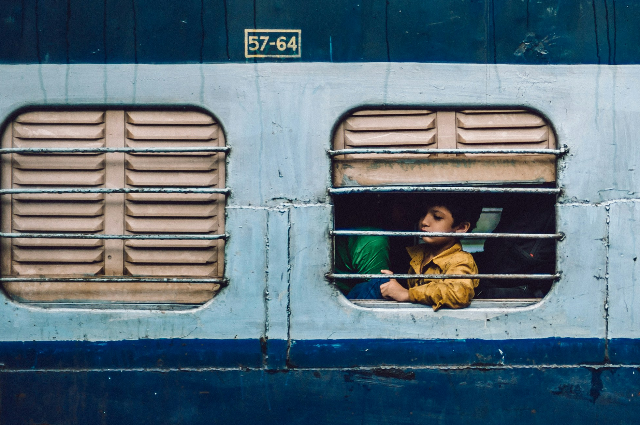
It was just another ordinary evening in 1986 when five-year-old Saroo Munshi Khan followed his older brother, Guddu, to a train station in central India. The two often scavenged for coins or food scraps to help their struggling family. But that night, exhaustion got the better of Saroo. He curled up in an empty train carriage and fell asleep, unaware that his life was about to change forever.
By the time he woke up, the train was in motion. It raced across the vast Indian landscape, carrying him nearly 1,600 kilometres away from home. Hours turned into days, and when the doors finally opened, Saroo found himself in the chaotic city of Calcutta (now Kolkata). Alone, disoriented, and unable to recall the correct name of his hometown, he wandered the unfamiliar streets.
Lost in a City That Didn’t Know Him
Calcutta was unkind to lost children. Saroo, was barely tall enough to reach the hands of passers-by, so he survived by scavenging and sleeping in alleys. He dodged child traffickers and narrowly escaped drowning in the Hooghly River. When a kind-hearted stranger took him to the police, it seemed like salvation—but authorities couldn’t trace his family. The five-year-old could only pronounce his mother’s name as “Kamla” and mistakenly called his town "Ganeshtalay," a place that didn't appear on any map.
With nowhere else to go, Saroo was sent to an orphanage. Unlike many other children there, he was lucky—an Australian couple, Sue and John Brierley, adopted him and gave him a new life in Tasmania. He learned English, grew up in a loving home, and adapted to a world that couldn’t be more different from the one he was taken from. But deep down, a part of him never stopped wondering where he had come from.
A Search Built on Fragments of Memory
For years, Saroo carried blurry images in his mind—a train station with a fountain, a bridge near his home, the taste of a specific kind of Indian snack. When he turned 20, the desire to find his origins became overwhelming. But where does a man begin looking for a home he barely remembers?
Saroo turned to Google Earth. Using the estimated time he had spent on the train and the direction it travelled, he started tracing railway lines backward from Kolkata. It was a painstaking process, requiring hours of scanning satellite images. He hunted for landmarks he had memorized as a child, checking hundreds of towns that fit the distance he had travelled.
Then, one day, something clicked. A small town named Khandwa had a train station that matched the one in his memories. He zoomed in and saw a water tower that looked just like the one he had played near as a child. Could this be home?
A Journey Back to the Beginning
In 2012, Saroo travelled to India with only an old photograph of himself and a heart full of hope. As he walked through the narrow streets of Khandwa, something felt familiar. He stopped a passerby and asked if they knew of a woman named Kamla.
“She still lives here,” someone said.
Moments later, Saroo stood in front of his childhood home—now a crumbling structure. And then he saw her. Kamla, his mother, still lived in the same town, never knowing if her lost son was alive or dead. She had spent years searching for him, but without access to technology, she had no way of knowing he had ended up on another continent.
The reunion was overwhelming. Tears flowed freely as mother and son embraced for the first time in 25 years. But the joy was tinged with sorrow—Guddu, the older brother who had taken him to the train station that fateful night, had died in an accident just days after Saroo disappeared.
A Story That Inspired the World
Saroo’s incredible journey inspired millions. He penned his memoir, A Long Way Home, which detailed his extraordinary search for his past. The book was later adapted into the critically acclaimed 2016 film Lion, starring Dev Patel and Nicole Kidman.
Today, Saroo lives with the knowledge that despite a lost childhood and decades of separation, he found his way home—not just through luck, but through sheer determination, technology, and an unbreakable bond between a mother and her son.
His story is a reminder that even the longest journeys, no matter how unintended, can still lead us back where we belong.
